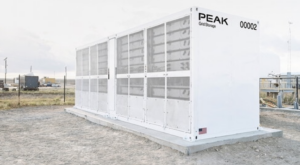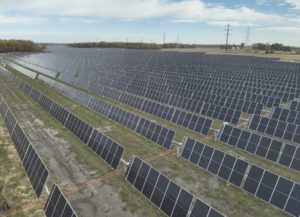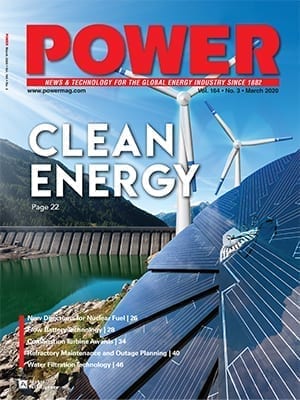The Department of the Interior (DOI) on Wednesday approved three major renewable energy projects in California and Nevada that have a total nameplate capacity of 1,100 MW.
The agency approved the 750-MW McCoy Solar Energy Project and 150-MW Desert Harvest Solar Farm, both located in California’s Riverside East Solar Energy Zone, an area established through the Western Solar Energy Plan as most suitable for solar development. It also green-lighted construction of the 200-MW Searchlight Wind Energy Project on public lands in Clark County, Nev.
The McCoy Solar Energy Project, located about 13 miles northwest of Blythe, Calif., was proposed by McCoy Solar LLC (a subsidiary of NextEra Energy Resources LLC) and would span about 7,700 acres of federal lands and 477 acres of private land. It could be "one of the largest solar projects in the world," the DOI said.
The Desert Harvest Solar Farm, proposed by EDF Renewable Energy (formerly enXco) on a site 6 miles north of Desert Center, Calif., would encompass about 1,208 acres of DOI-managed lands for the 150-MW photovoltaic facility. The Searchlight Wind Energy Project will be built on 18,949 acres of DOI-managed land near Searchlight, Nev., 60 miles southeast of Las Vegas. The permanent footprint of the 200-MW project will be approximately 160 acres. The Western Area Power Administration is proposing to construct, operate, and maintain a new switching station to connect the project to the existing power grid.
Outgoing Interior Secretary Ken Salazar said in a statement that the DOI had, over the past four years, advanced 37 wind, solar, and geothermal projects on public land, for a total of 11,500 MW. These include 20 utility-scale solar facilities, eight wind farms, and nine geothermal plants, with associated transmission corridors and infrastructure to connect the new generation to established power grids.
Last month, three public-interest environmental groups filed a complaint in federal court that claim the government failed to consider degraded lands for the siting of "destructive" utility-scale solar plants, and that it focused instead on millions of acres of public land when it established solar energy zones in six southwestern states.
The DOI in October 2012 finalized its Programmatic Environmental Impact Statement (PEIS), establishing an initial set of 17 solar energy zones totaling about 285,000 acres of public lands that would serve as priority areas for commercial-scale solar development. It essentially provides a blueprint for utility-scale solar energy permitting for solar power projects on public lands in six western states: Arizona, California, Colorado, Nevada, New Mexico, and Utah.
Sources: POWERnews, DOI
—Sonal Patel, Senior Writer (@POWERmagazine, @sonalcpatel)







